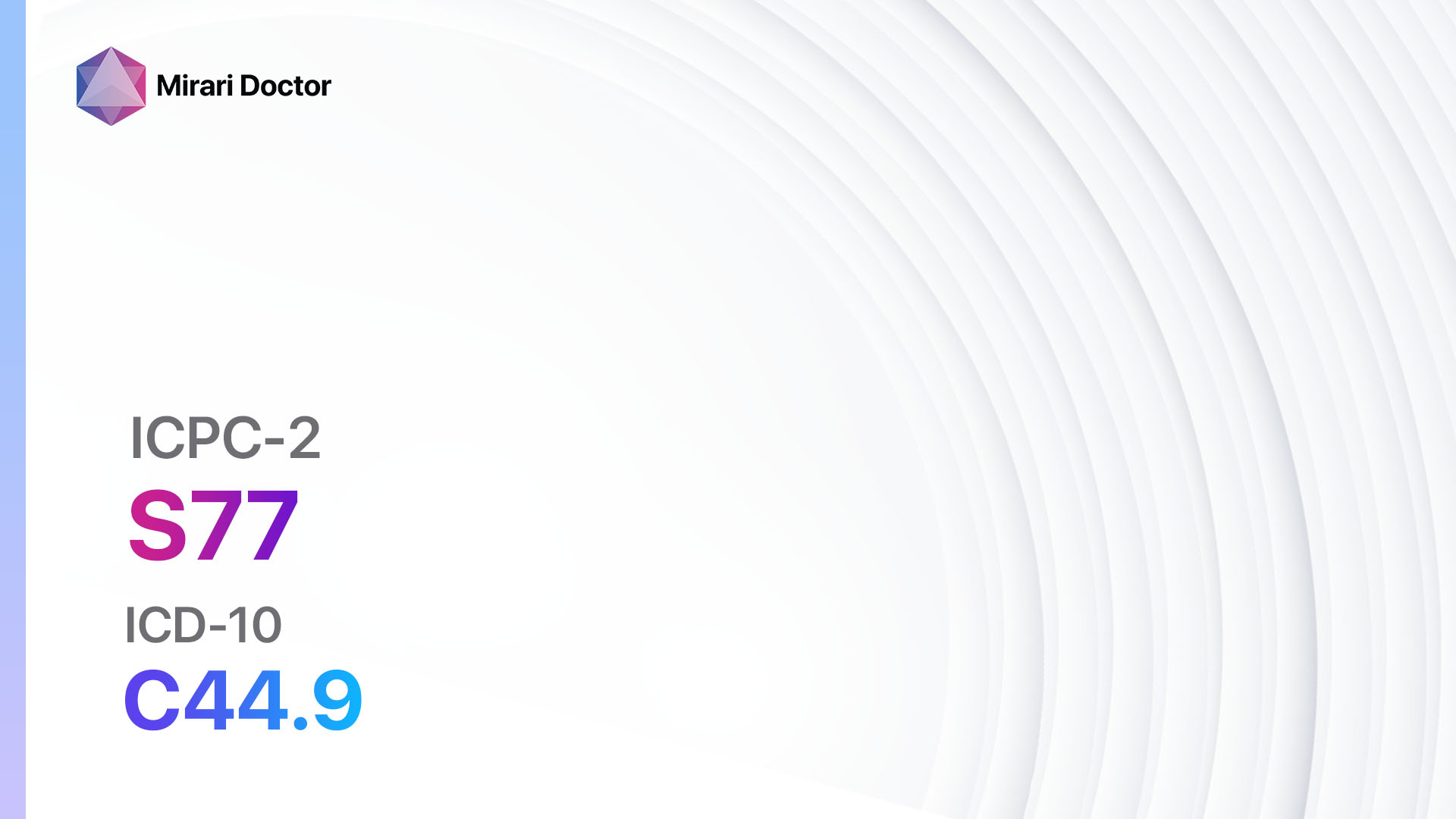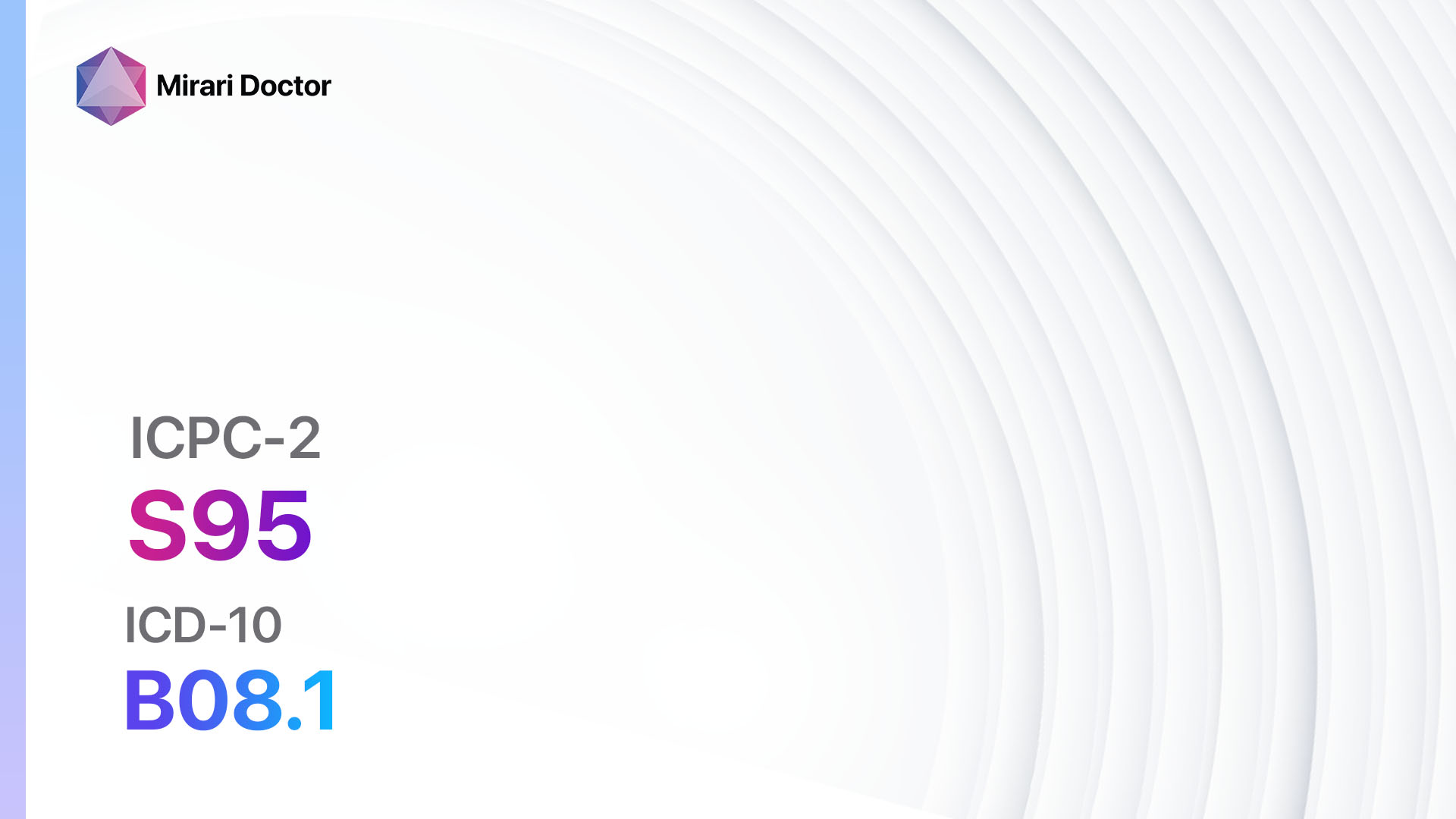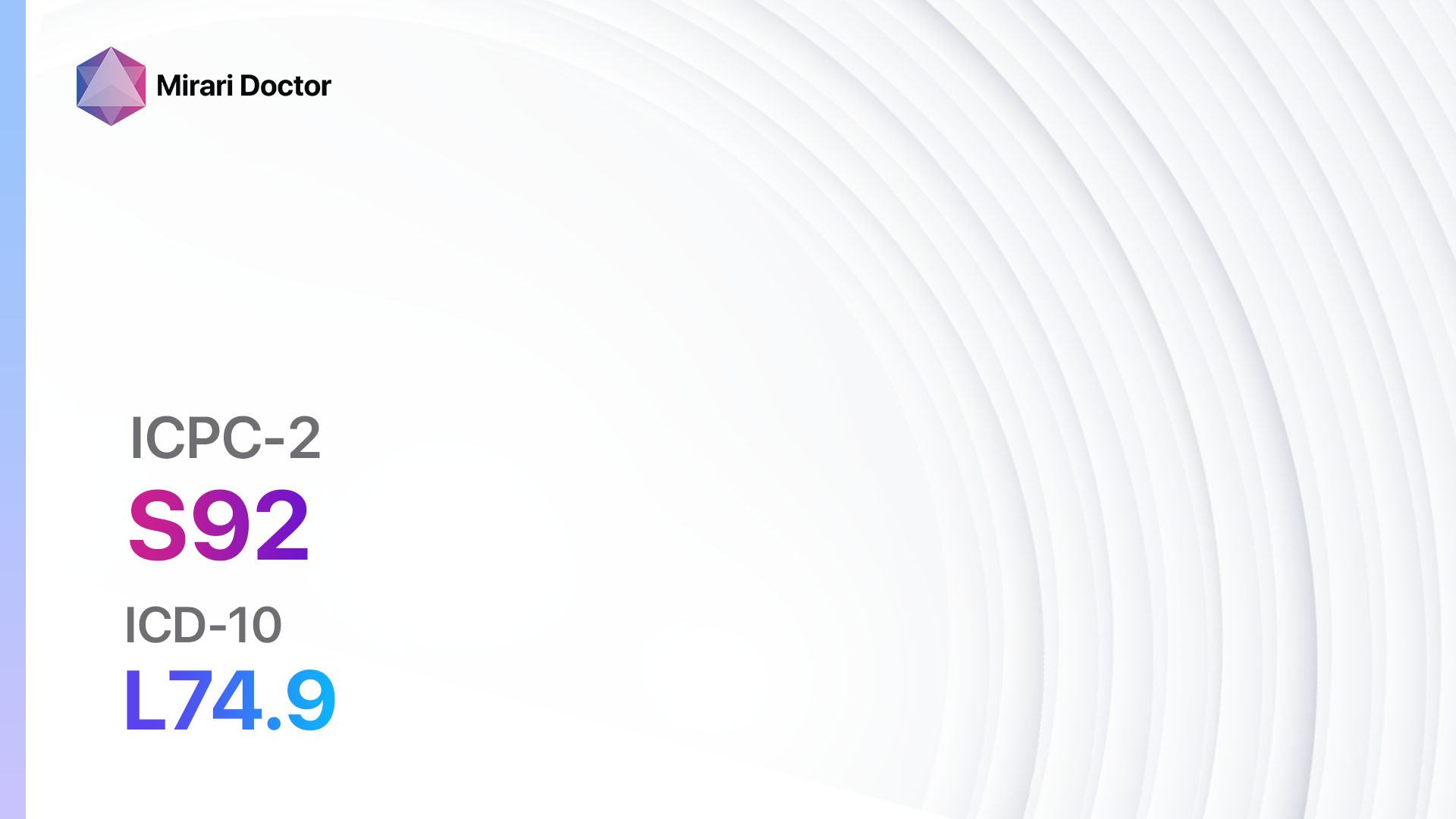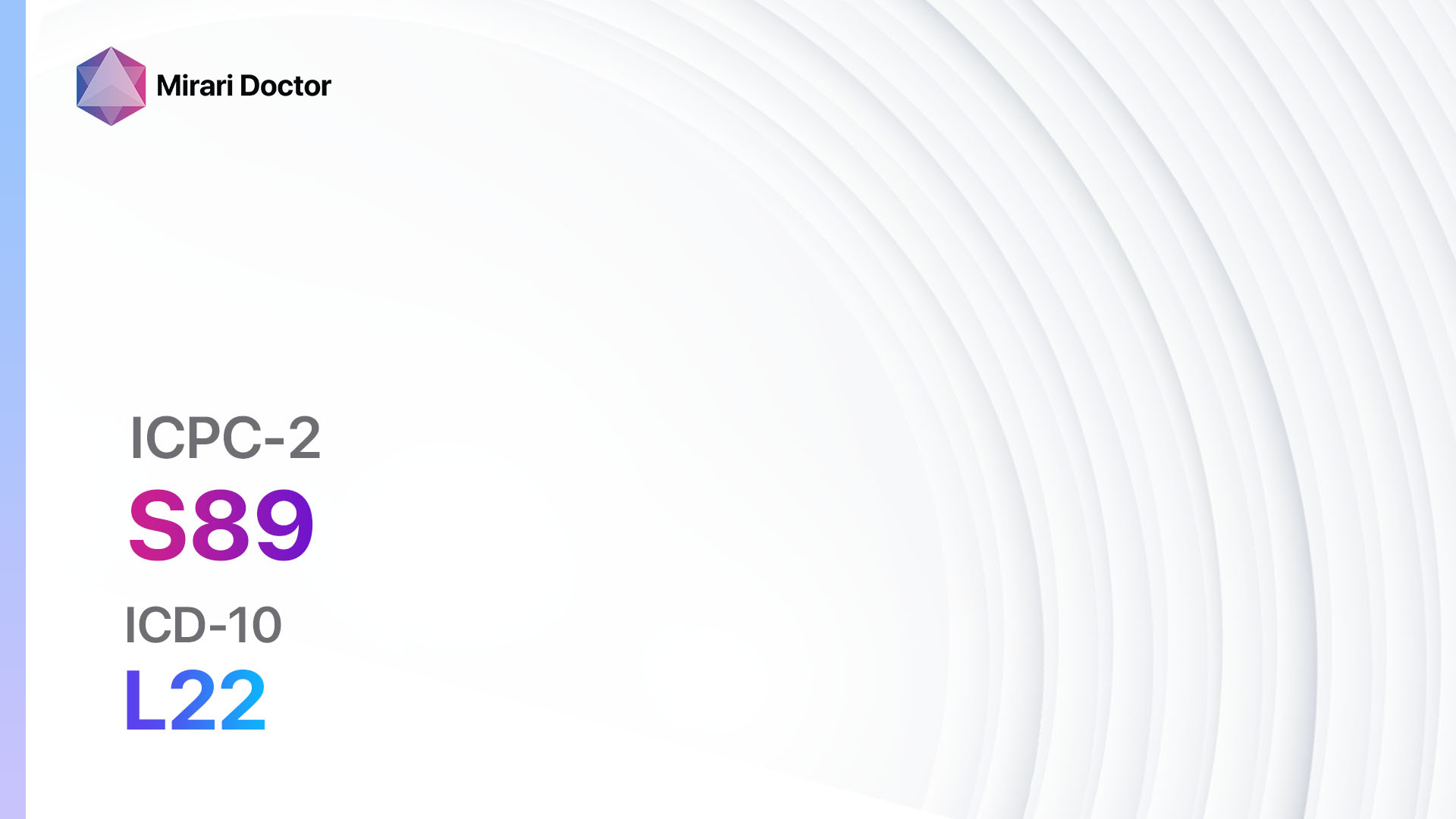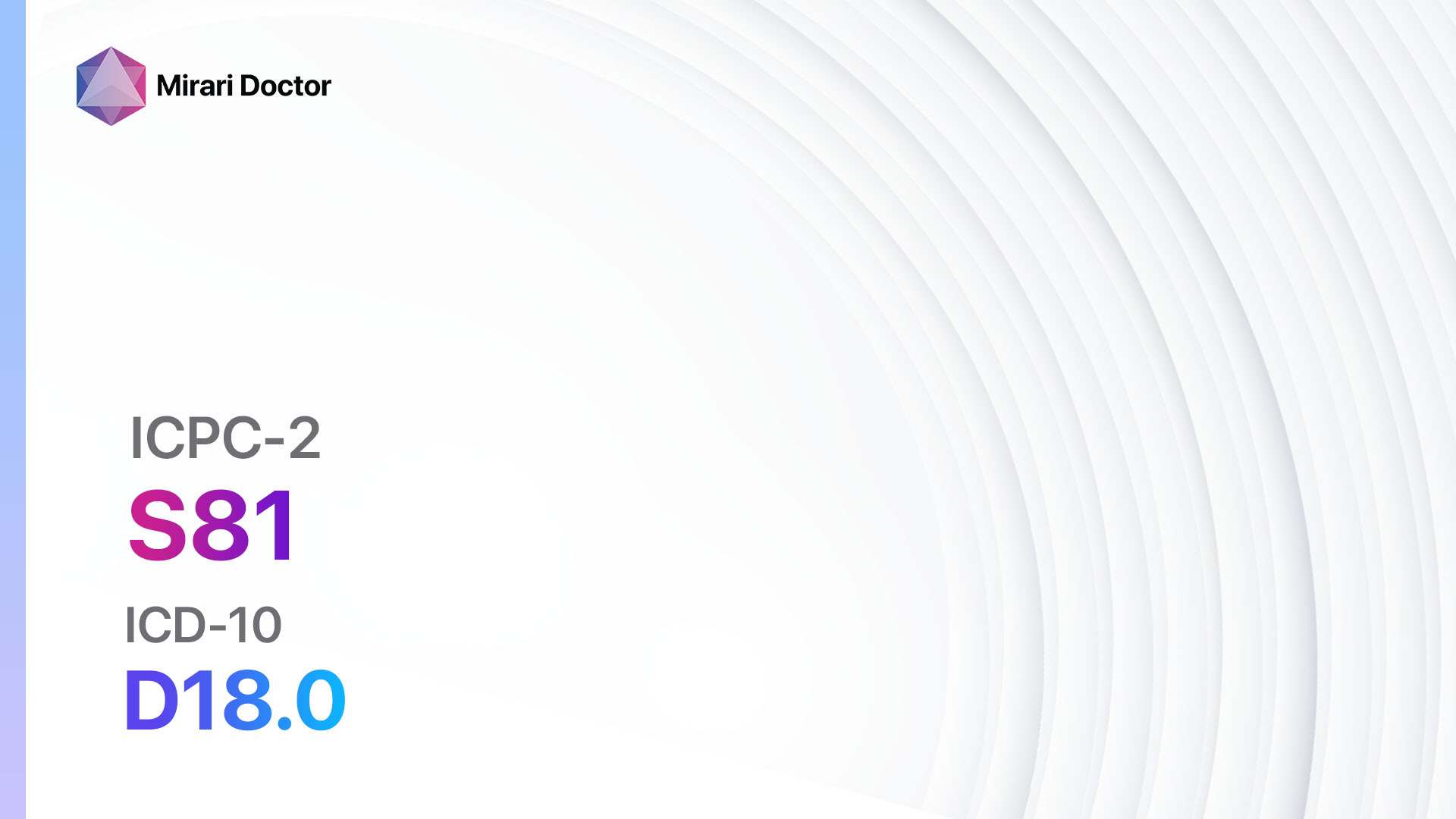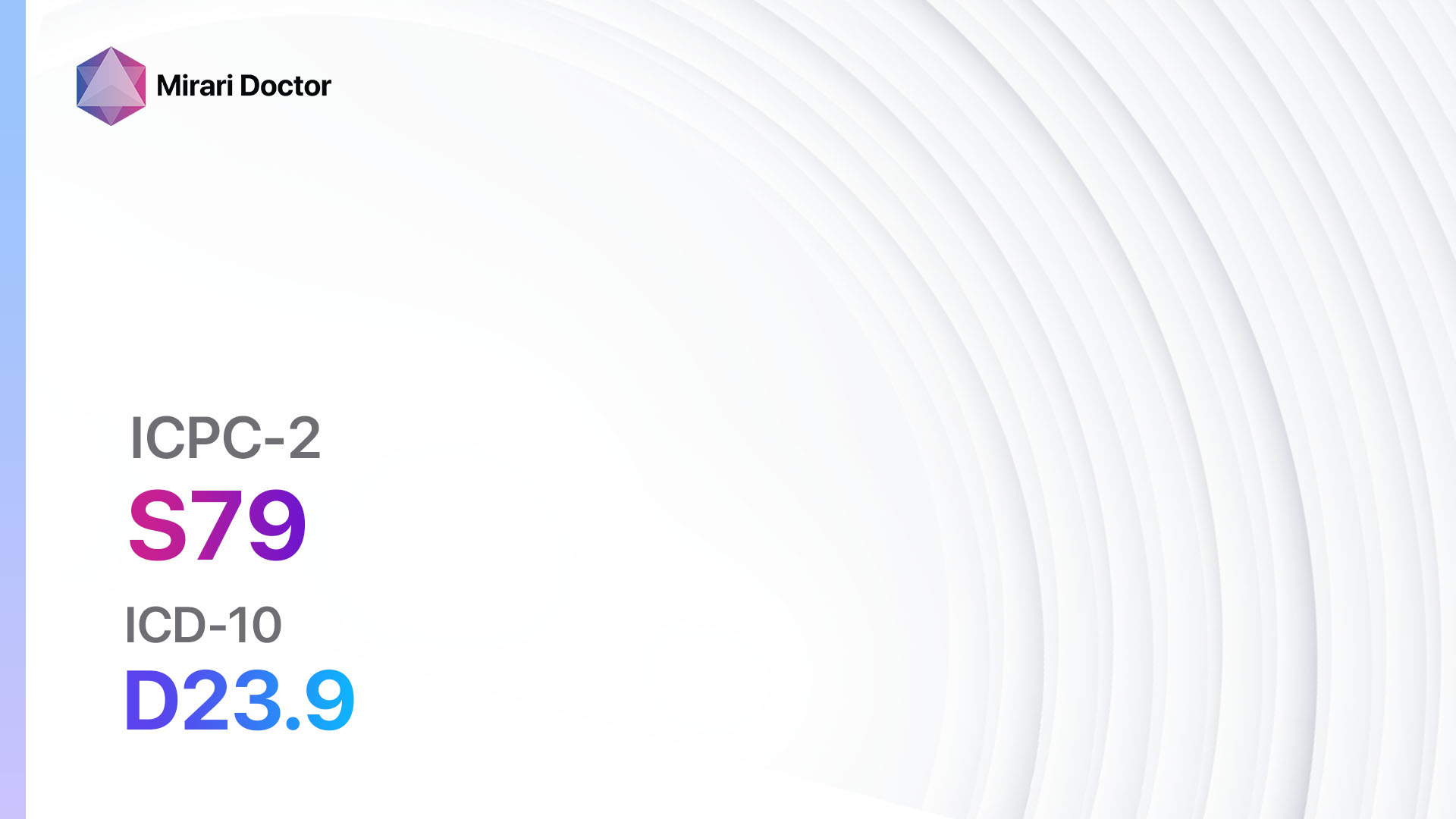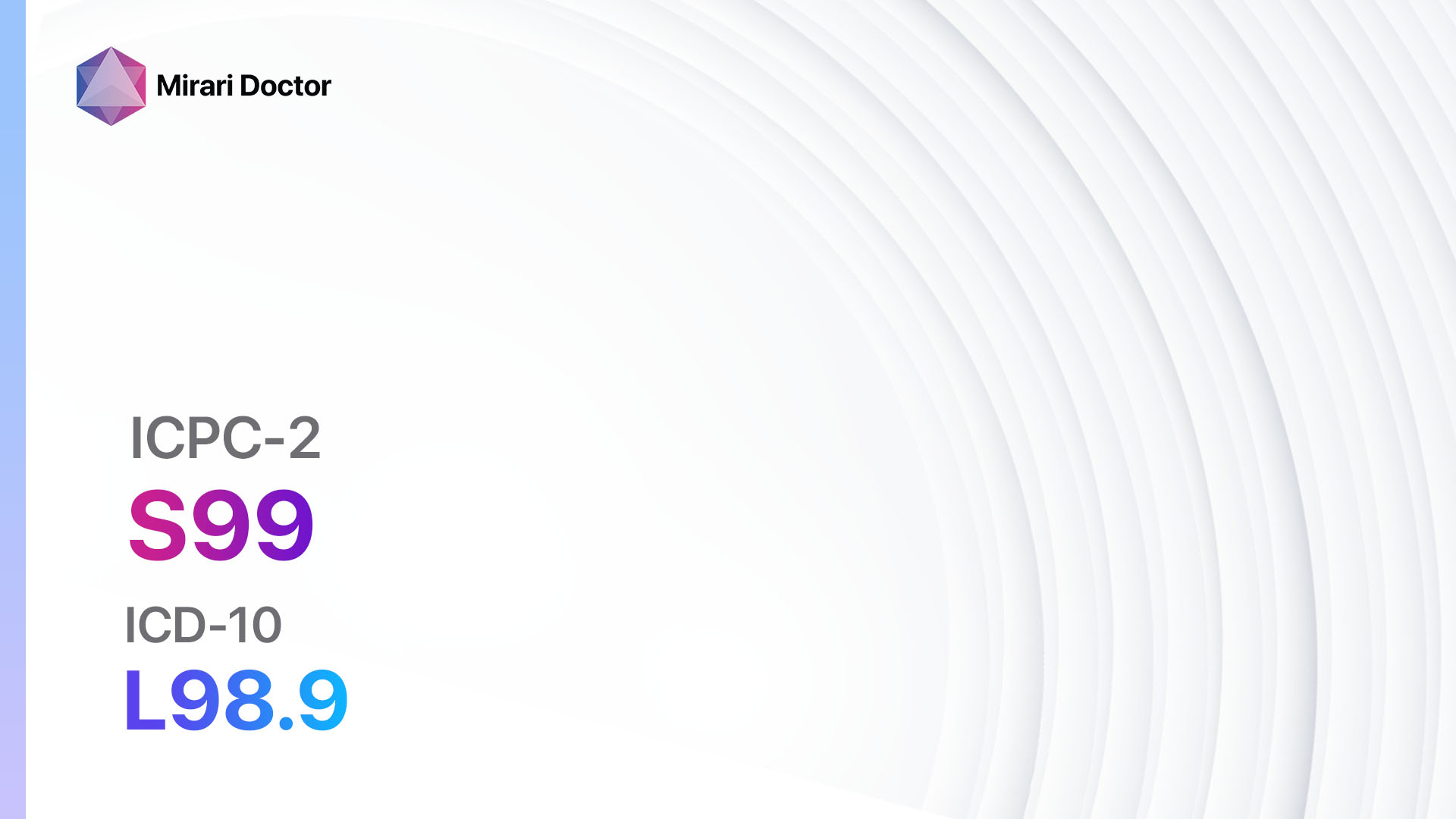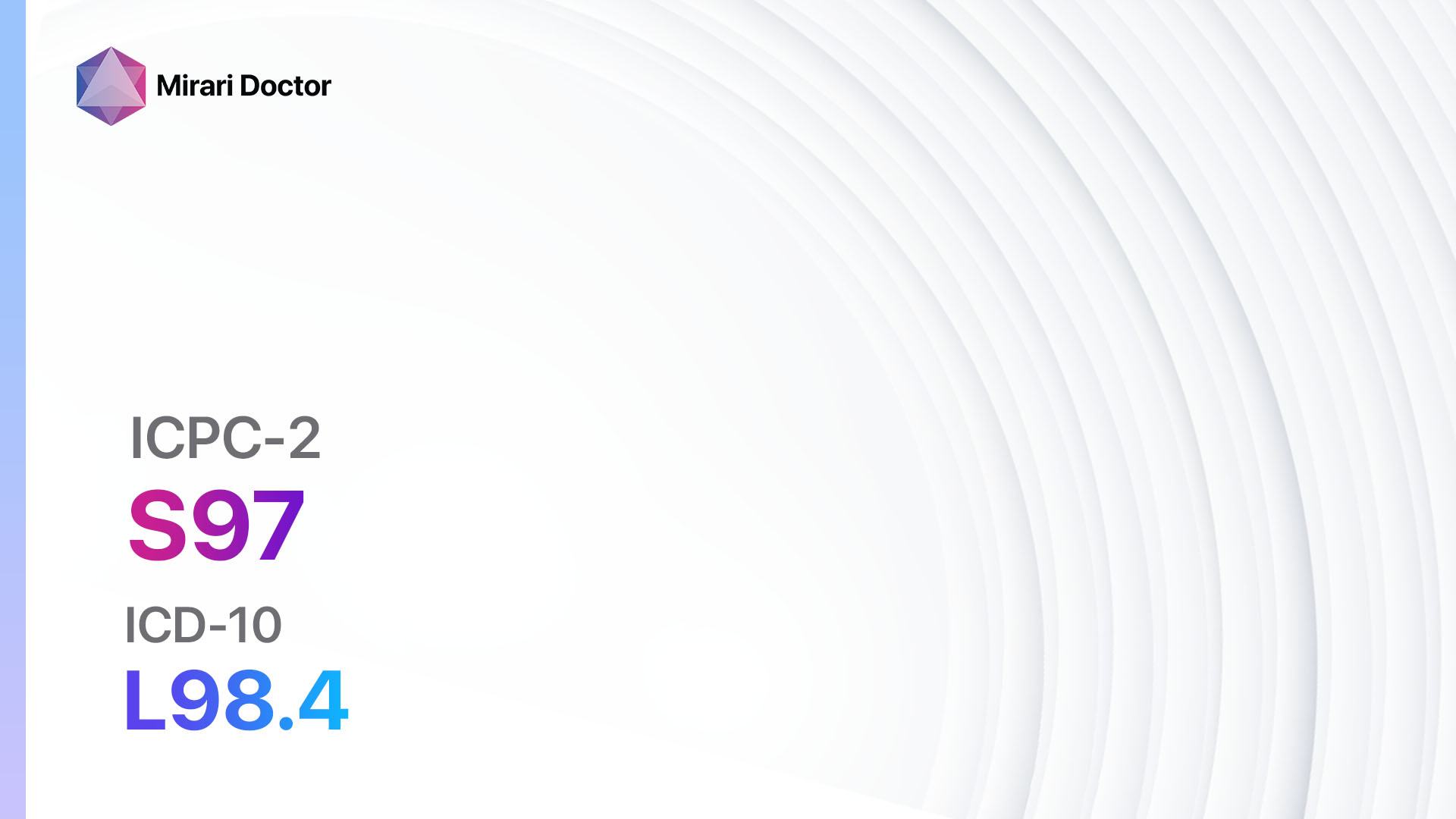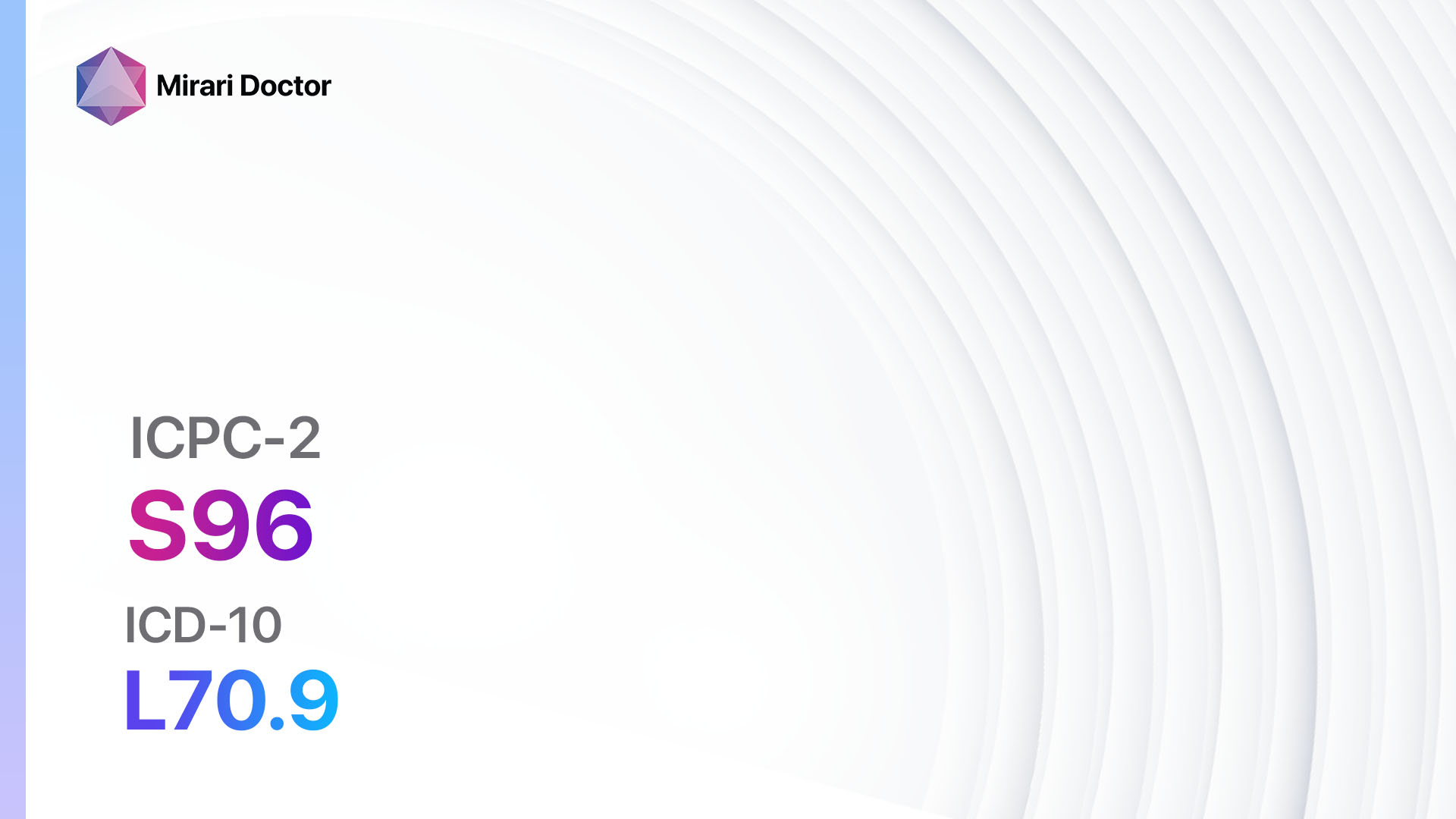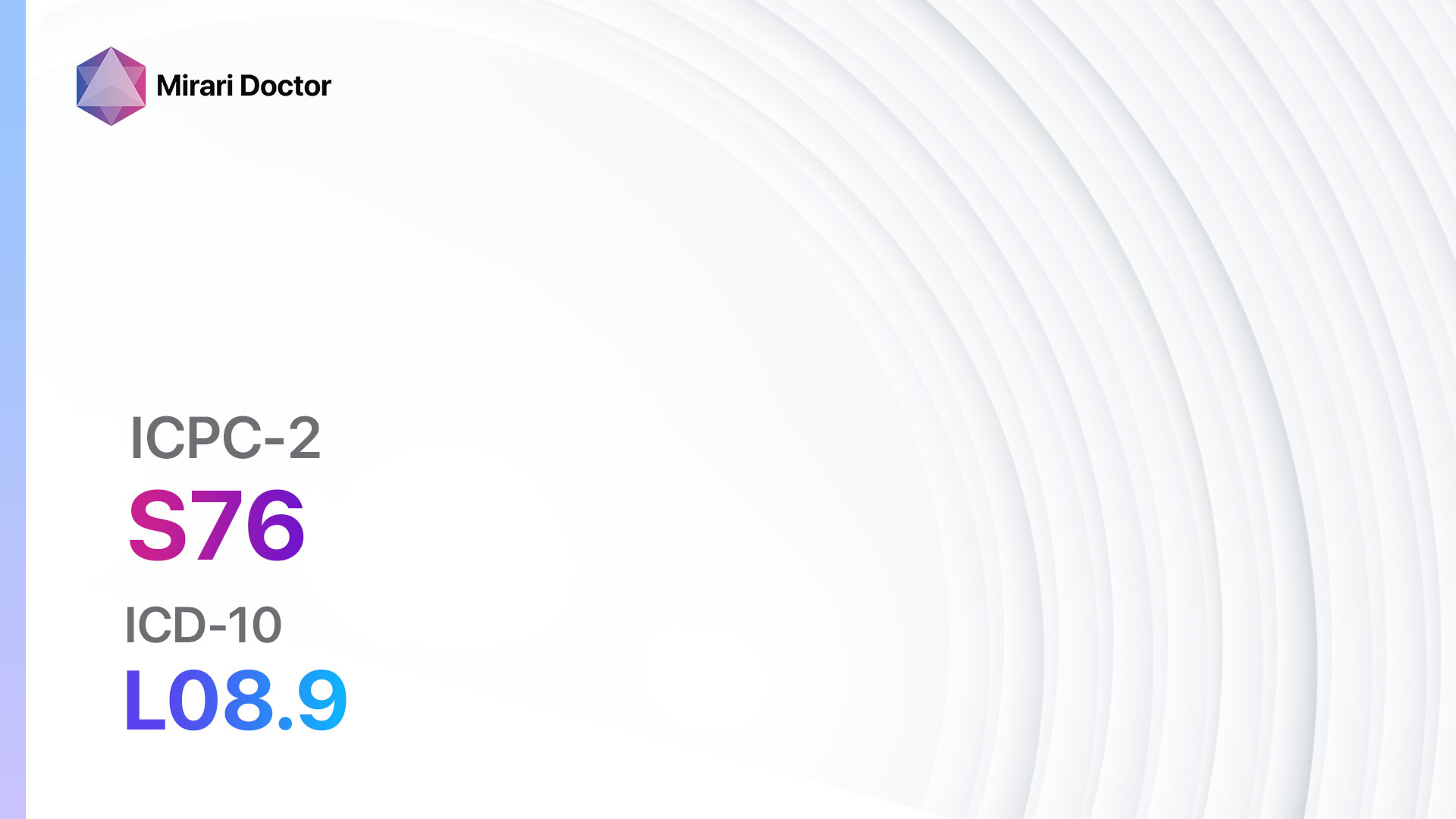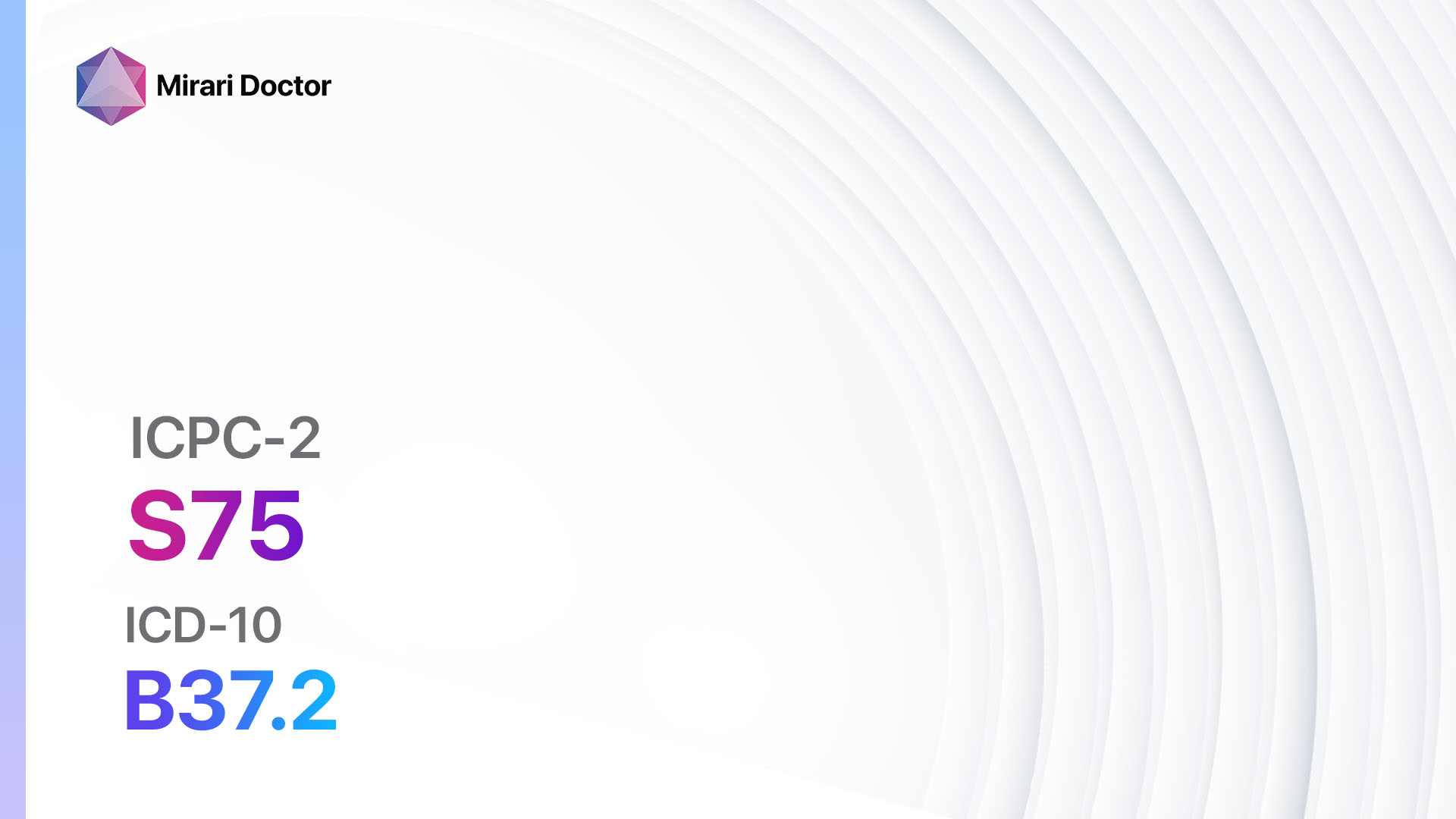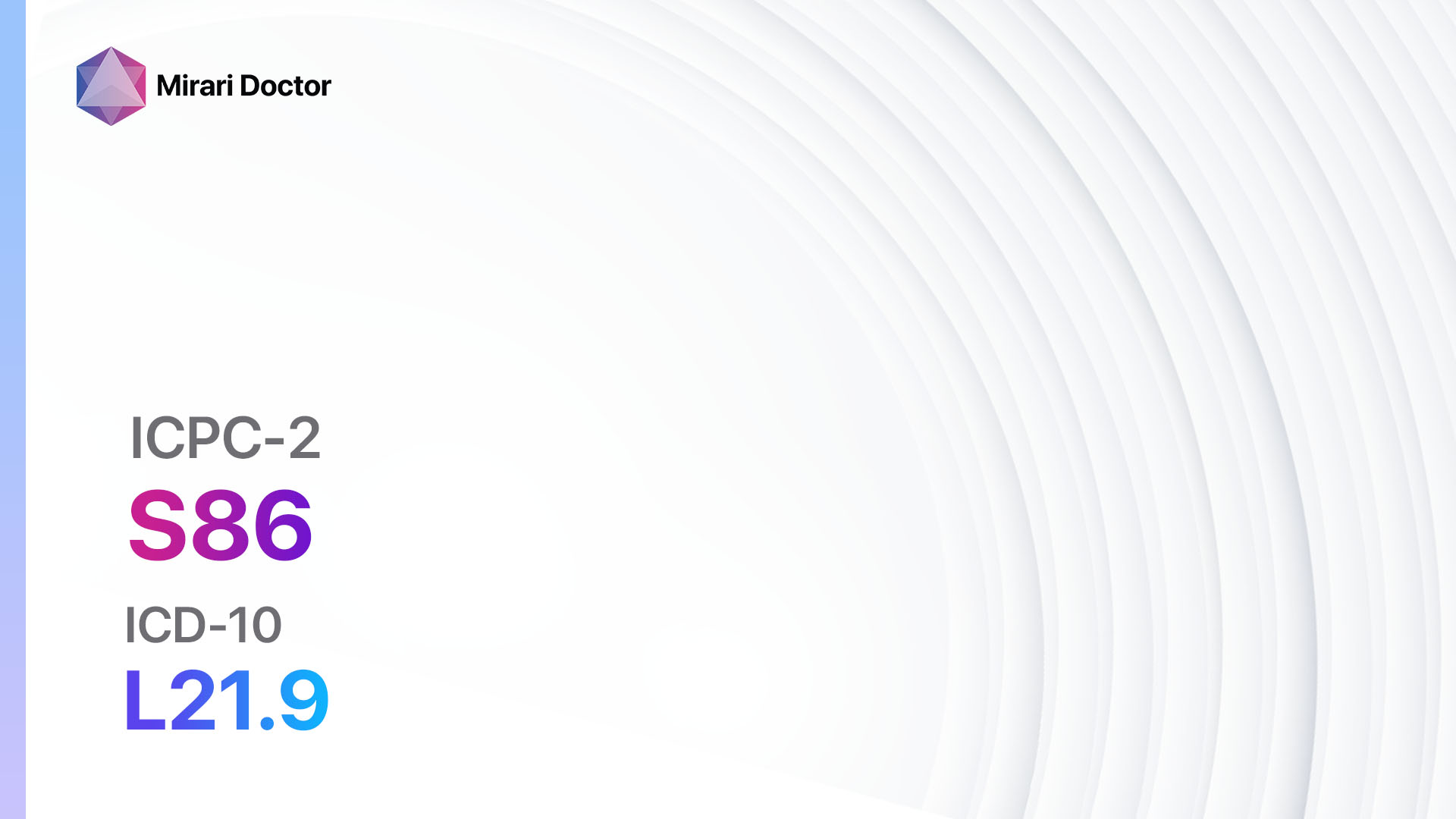
Introduction
Dermatitis seborrhoeic is a common skin condition characterized by red, itchy, and flaky skin. It primarily affects areas of the body with a high concentration of oil glands, such as the scalp, face, and chest[1]. The aim of this guide is to provide healthcare professionals with a comprehensive overview of the diagnostic steps, possible interventions, and lifestyle interventions for dermatitis seborrhoeic.
Codes
Symptoms
- Flaky, scaly skin
- Redness and inflammation
- Itching and discomfort
- Greasy or oily appearance
- Yellow or white crusty patches
- Hair loss (in severe cases)[3]
Causes
- Overgrowth of a yeast called Malassezia
- Hormonal changes
- Stress
- Cold, dry weather
- Certain medical conditions (such as HIV/AIDS or Parkinson’s disease)
- Weakened immune system[4]
Diagnostic Steps
Medical History
- Gather information about the patient’s symptoms, including the duration and severity of the condition.
- Ask about any previous episodes of dermatitis seborrhoeic.
- Inquire about any known risk factors, such as a family history of the condition or exposure to certain environmental triggers.
- Assess the patient’s overall health and any underlying medical conditions that may contribute to the development of dermatitis seborrhoeic[5].
Physical Examination
- Examine the affected areas of the skin, such as the scalp, face, and chest.
- Look for signs of redness, inflammation, flaking, and greasy or oily appearance.
- Check for the presence of yellow or white crusty patches.
- Assess the severity of the condition and any associated symptoms, such as itching or discomfort[6].
Determine Severity
- Mild: Minimal redness and flaking, with no significant impact on daily activities.
- Moderate: Increased redness and flaking, with mild to moderate itching and discomfort.
- Severe: Severe redness and flaking, with significant itching, discomfort, and potential hair loss[7].
Laboratory Tests
- No specific laboratory tests are required for the diagnosis of dermatitis seborrhoeic. The diagnosis is primarily based on the clinical presentation and physical examination findings[8].
Diagnostic Imaging
- No diagnostic imaging is necessary for the diagnosis of dermatitis seborrhoeic[9].
Other Tests
- No other diagnostic tests are necessary for the diagnosis of dermatitis seborrhoeic[10].
Follow-up and Patient Education
- Schedule a follow-up appointment to monitor the patient’s response to treatment and adjust the management plan if necessary.
- Provide patient education on the condition, including information about triggers, self-care measures, and the importance of maintaining good skin hygiene.
Possible Interventions
Traditional Interventions
Medications:
Top 5 drugs for Dermatitis seborrhoeic:
- Topical antifungal agents (e.g., Ketoconazole, Clotrimazole):
- Cost: Generic versions can range from $5 to $30.
- Contraindications: Hypersensitivity to the medication.
- Side effects: Skin irritation, burning sensation.
- Severe side effects: Allergic reactions.
- Drug interactions: None reported.
- Warning: Avoid contact with eyes.
- Topical corticosteroids (e.g., Hydrocortisone, Betamethasone):
- Cost: Generic versions can range from $5 to $30.
- Contraindications: Hypersensitivity to the medication, skin infections.
- Side effects: Thinning of the skin, skin discoloration.
- Severe side effects: None reported with short-term use.
- Drug interactions: None reported.
- Warning: Avoid prolonged use on the face and other sensitive areas.
- Topical calcineurin inhibitors (e.g., Tacrolimus, Pimecrolimus):
- Cost: Generic versions can range from $50 to $150.
- Contraindications: Hypersensitivity to the medication, skin infections.
- Side effects: Burning or stinging sensation, skin redness.
- Severe side effects: None reported with short-term use.
- Drug interactions: None reported.
- Warning: Avoid prolonged use on the face and other sensitive areas.
- Coal tar preparations (e.g., Coal tar shampoo, Coal tar ointment):
- Cost: Generic versions can range from $10 to $30.
- Contraindications: Hypersensitivity to the medication.
- Side effects: Skin irritation, strong odor.
- Severe side effects: None reported.
- Drug interactions: None reported.
- Warning: Avoid contact with eyes and other mucous membranes.
- Antifungal oral medications (e.g., Fluconazole, Itraconazole):
- Cost: Generic versions can range from $10 to $50 for a course of treatment.
- Contraindications: Hypersensitivity to the medication, liver disease.
- Side effects: Nausea, headache.
- Severe side effects: Liver damage (rare).
- Drug interactions: Certain medications, such as warfarin and statins.
- Warning: Regular liver function tests may be required.
Alternative Drugs:
- Salicylic acid preparations: Help to remove scales and reduce inflammation.
- Selenium sulfide preparations: Reduce the production of yeast on the skin.
- Azelaic acid preparations: Help to normalize the skin’s natural processes and reduce inflammation.
- Topical retinoids: Promote skin cell turnover and reduce inflammation.
- Oral antibiotics: Used in severe cases with secondary bacterial infections.
Surgical Procedures:
- No surgical procedures are indicated for the treatment of dermatitis seborrhoeic.
Alternative Interventions
- Tea tree oil: Apply diluted tea tree oil to the affected areas to reduce inflammation and fungal growth. Cost: $5-$15 per bottle.
- Aloe vera gel: Apply aloe vera gel to soothe and moisturize the skin. Cost: $5-$20 per bottle.
- Probiotics: Take oral probiotic supplements to help restore the balance of good bacteria on the skin. Cost: $10-$30 per bottle.
- Omega-3 fatty acids: Increase intake of foods rich in omega-3 fatty acids or take fish oil supplements to reduce inflammation. Cost: Varies depending on the source.
- Stress management techniques: Practice stress-reducing activities, such as meditation or yoga, to help manage symptoms. Cost: Varies depending on the specific activity.
Lifestyle Interventions
- Maintain good skin hygiene by washing the affected areas with a gentle cleanser daily.
- Avoid harsh soaps, shampoos, and skincare products that can irritate the skin.
- Use a moisturizer to keep the skin hydrated and prevent excessive dryness.
- Avoid scratching or picking at the affected areas to prevent further irritation and potential infection.
- Protect the skin from cold, dry weather by wearing appropriate clothing and using a humidifier indoors.
- Identify and avoid triggers that worsen the symptoms, such as certain foods or environmental factors.
- Manage stress through relaxation techniques, exercise, and seeking support from friends and family.
It is important to note that the cost ranges provided are approximate and may vary depending on the location and availability of the interventions.
Mirari Cold Plasma Alternative Intervention
Understanding Mirari Cold Plasma
- Safe and Non-Invasive Treatment: Mirari Cold Plasma is a safe and non-invasive treatment option for various skin conditions. It does not require incisions, minimizing the risk of scarring, bleeding, or tissue damage.
- Efficient Extraction of Foreign Bodies: Mirari Cold Plasma facilitates the removal of foreign bodies from the skin by degrading and dissociating organic matter, allowing easier access and extraction.
- Pain Reduction and Comfort: Mirari Cold Plasma has a local analgesic effect, providing pain relief during the treatment, making it more comfortable for the patient.
- Reduced Risk of Infection: Mirari Cold Plasma has antimicrobial properties, effectively killing bacteria and reducing the risk of infection.
- Accelerated Healing and Minimal Scarring: Mirari Cold Plasma stimulates wound healing and tissue regeneration, reducing healing time and minimizing the formation of scars.
Mirari Cold Plasma Prescription
Video instructions for using Mirari Cold Plasma Device – S86 Dermatitis seborrhoeic (ICD-10:L21.9)
| Mild | Moderate | Severe |
| Mode setting: 1 (Infection) Location: 0 (Localized) Morning: 15 minutes, Evening: 15 minutes |
Mode setting: 1 (Infection) Location: 0 (Localized) Morning: 30 minutes, Lunch: 30 minutes, Evening: 30 minutes |
Mode setting: 1 (Infection) Location: 0 (Localized) Morning: 30 minutes, Lunch: 30 minutes, Evening: 30 minutes |
| Mode setting: 2 (Wound Healing) Location: 0 (Localized) Morning: 15 minutes, Evening: 15 minutes |
Mode setting: 2 (Wound Healing) Location: 0 (Localized) Morning: 30 minutes, Lunch: 30 minutes, Evening: 30 minutes |
Mode setting: 2 (Wound Healing) Location: 0 (Localized) Morning: 30 minutes, Lunch: 30 minutes, Evening: 30 minutes |
| Mode setting: 3 (Antiviral Therapy) Location: 0 (Localized) Morning: 15 minutes, Evening: 15 minutes |
Mode setting: 3 (Antiviral Therapy) Location: 0 (Localized) Morning: 30 minutes, Lunch: 30 minutes, Evening: 30 minutes |
Mode setting: 3 (Antiviral Therapy) Location: 0 (Localized) Morning: 30 minutes, Lunch: 30 minutes, Evening: 30 minutes |
| Mode setting: 10 (Dermatitis/Fungus) Location: 0 (Localized) Morning: 15 minutes, Evening: 15 minutes |
Mode setting: 10 (Dermatitis/Fungus) Location: 0 (Localized) Morning: 30 minutes, Lunch: 30 minutes, Evening: 30 minutes |
Mode setting: 10 (Dermatitis/Fungus) Location: 0 (Localized) Morning: 30 minutes, Lunch: 30 minutes, Evening: 30 minutes |
| Total Morning: 60 minutes approx. $10 USD, Evening: 60 minutes approx. $10 USD |
Total Morning: 120 minutes approx. $20 USD, Lunch: 120 minutes approx. $20 USD, Evening: 120 minutes approx. $20 USD, |
Total Morning: 120 minutes approx. $20 USD, Lunch: 120 minutes approx. $20 USD, Evening: 120 minutes approx. $20 USD, |
| Usual treatment for 7-60 days approx. $140 USD – $1200 USD | Usual treatment for 6-8 weeks approx. $2,520 USD – $3,360 USD |
Usual treatment for 3-6 months approx. $5,400 USD – $10,800 USD
|
 |
|
Use the Mirari Cold Plasma device to treat Dermatitis seborrhoeic effectively.
WARNING: MIRARI COLD PLASMA IS DESIGNED FOR THE HUMAN BODY WITHOUT ANY ARTIFICIAL OR THIRD PARTY PRODUCTS. USE OF OTHER PRODUCTS IN COMBINATION WITH MIRARI COLD PLASMA MAY CAUSE UNPREDICTABLE EFFECTS, HARM OR INJURY. PLEASE CONSULT A MEDICAL PROFESSIONAL BEFORE COMBINING ANY OTHER PRODUCTS WITH USE OF MIRARI.
Step 1: Cleanse the Skin
- Start by cleaning the affected area of the skin with a gentle cleanser or mild soap and water. Gently pat the area dry with a clean towel.
Step 2: Prepare the Mirari Cold Plasma device
- Ensure that the Mirari Cold Plasma device is fully charged or has fresh batteries as per the manufacturer’s instructions. Make sure the device is clean and in good working condition.
- Switch on the Mirari device using the power button or by following the specific instructions provided with the device.
- Some Mirari devices may have adjustable settings for intensity or treatment duration. Follow the manufacturer’s instructions to select the appropriate settings based on your needs and the recommended guidelines.
Step 3: Apply the Device
- Place the Mirari device in direct contact with the affected area of the skin. Gently glide or hold the device over the skin surface, ensuring even coverage of the area experiencing.
- Slowly move the Mirari device in a circular motion or follow a specific pattern as indicated in the user manual. This helps ensure thorough treatment coverage.
Step 4: Monitor and Assess:
- Keep track of your progress and evaluate the effectiveness of the Mirari device in managing your Dermatitis seborrhoeic. If you have any concerns or notice any adverse reactions, consult with your health care professional.
Note
This guide is for informational purposes only and should not replace the advice of a medical professional. Always consult with your healthcare provider or a qualified medical professional for personal advice, diagnosis, or treatment. Do not solely rely on the information presented here for decisions about your health. Use of this information is at your own risk. The authors of this guide, nor any associated entities or platforms, are not responsible for any potential adverse effects or outcomes based on the content.
Mirari Cold Plasma System Disclaimer
- Purpose: The Mirari Cold Plasma System is a Class 2 medical device designed for use by trained healthcare professionals. It is registered for use in Thailand and Vietnam. It is not intended for use outside of these locations.
- Informational Use: The content and information provided with the device are for educational and informational purposes only. They are not a substitute for professional medical advice or care.
- Variable Outcomes: While the device is approved for specific uses, individual outcomes can differ. We do not assert or guarantee specific medical outcomes.
- Consultation: Prior to utilizing the device or making decisions based on its content, it is essential to consult with a Certified Mirari Tele-Therapist and your medical healthcare provider regarding specific protocols.
- Liability: By using this device, users are acknowledging and accepting all potential risks. Neither the manufacturer nor the distributor will be held accountable for any adverse reactions, injuries, or damages stemming from its use.
- Geographical Availability: This device has received approval for designated purposes by the Thai and Vietnam FDA. As of now, outside of Thailand and Vietnam, the Mirari Cold Plasma System is not available for purchase or use.
References
- Borda LJ, Wikramanayake TC. Seborrheic Dermatitis and Dandruff: A Comprehensive Review. J Clin Investig Dermatol. 2015;3(2):10.13188/2373-1044.1000019.
- World Health Organization. International Statistical Classification of Diseases and Related Health Problems 10th Revision (ICD-10)-WHO Version for 2019.
- Sampaio AL, Mameri AC, Vargas TJ, Ramos-e-Silva M, Nunes AP, Carneiro SC. Seborrheic dermatitis. An Bras Dermatol. 2011;86(6):1061-1074.
- Gupta AK, Madzia SE, Batra R. Etiology and management of Seborrheic dermatitis. Dermatology. 2004;208(2):89-93.
- Gary G. Optimizing treatment approaches in seborrheic dermatitis. J Clin Aesthet Dermatol. 2013;6(2):44-49.
- Dessinioti C, Katsambas A. Seborrheic dermatitis: etiology, risk factors, and treatments: facts and controversies. Clin Dermatol. 2013;31(4):343-351.
- Berk T, Scheinfeld N. Seborrheic dermatitis. P T. 2010;35(6):348-352.
- Schwartz JR, Messenger AG, Tosti A, et al. A comprehensive pathophysiology of dandruff and seborrheic dermatitis – towards a more precise definition of scalp health. Acta Derm Venereol. 2013;93(2):131-137.
- Wikramanayake TC, Borda LJ, Miteva M, Paus R. Seborrheic dermatitis-Looking beyond Malassezia. Exp Dermatol. 2019;28(9):991-1001.
- Clark GW, Pope SM, Jaboori KA. Diagnosis and treatment of seborrheic dermatitis. Am Fam Physician. 2015;91(3):185-190.
Related articles
Made in USA



